- Home
- Tom Clancy
Fighter Wing: A Guided Tour of an Air Force Combat Wing Page 2
Fighter Wing: A Guided Tour of an Air Force Combat Wing Read online
Page 2
The second date is February 28th, 1991, the day President Bush ordered a cease-fire. The war had been won, quickly and decisively, and our forces had sustained minimal casualties. Our people had performed magnificently, demonstrating superb professional competence, discipline, and leadership. The results surpassed even my own expectations. While the entire world marveled at the total domination by our air forces, and the demonstrated effectiveness of “smart” bombs and stealth technology, the essential role of modern land-based airpower had been established. Airpower performance had now caught up with airpower theory, and its decisiveness was now a fact of modern warfare strategy. Viewing the confusion in Baghdad on CNN, when our first planes evaded Iraqi radar and caught the Iraqi armed forces by surprise, convinced a skeptical public of the immense value of stealth weapons in future air wars. In addition, the precision munitions, so clearly described in this book, assured destruction of military targets without unnecessary civilian casualties. Our total air dominance allowed unrestricted surveillance of all enemy ground movements, while denying that same capability to Saddam Hussein. With impunity, we were able to destroy his war-making capability and demoralize his soldiers to the point of ineffectiveness. And finally, this victory of airpower validated the realism of our training programs as well as the superb performance and competence of our pilots and aircrews.
When I first discussed this book with Tom, I mentioned another date with particular personal meaning. On March 26th, 1991, I assumed command of Tactical Air Command (TAC). It was the dream command assignment for any fighter pilot. And yet, who would have guessed then that I’d be the last head of that proud organization, with its rich tradition and honored history . . . a history that included our proud performance in the Gulf War, when our people basked in the glory of their victory with the boisterous phrase “It can’t get any better than this!” In fact, when I became the TAC commander, I knew that high point could not last, and that we were very quickly traveling a new and uncharted course; for I was already aware that we had to undertake the painful processes of downsizing and restructuring, while simultaneously maintaining our combat capability. With our “too easy” victory in the Gulf, and the end of the perception of foreign threat, the American public and national leadership felt confident enough in our national defense to conclude that a drastic reduction would not sacrifice security.
The time had come to downsize the Air Force and formulate a complete plan for its reorganization. With increased competition for scarce budget dollars, the military would get a far smaller share. In a short period we eliminated nearly one third of our personnel and retired 35% of our aircraft. Most of our overseas bases were closed; our people and equipment would now be primarily located in the continental United States. The decision was made to value technology and intense training over numbers. We’d now have a highly trained, but smaller force. In addition, the primary Air Force mission had changed. Where before the focus was on nuclear deterrence and a single major adversary, now we saw a multifaceted requirement to project power and strike anywhere in the world. Thus was born the new mission statement: Global Reach/Global Power. This book chronicles the restructuring of the U.S. Air Force to meet the new mission.
The fourth date of great importance to me is June 1st, 1992. On that day, we witnessed the merger of Strategic Air Command (SAC), TAC, and elements of the Military Airlift Command (MAC), and the birth of Air Combat Command (ACC). This new organization provides combat-ready air forces for any regional theater commander in chief. By far the largest U.S. Air Force command, ACC has about a quarter million active-duty, reserve, and civilian members; and it has nearly three thousand aircraft, including virtually every bomber, fighter, reconnaissance, command-and-control, electronic warfare, and theater transport plane in the U.S. Air Force inventory. To say there was trepidation by SAC, MAC, and TAC members at the thought of such a merger is an understatement. Thus, as the first commander of ACC, I found it important to assure our people that neither SAC, MAC, nor TAC was losing in a “corporate takeover.” This was a friendly merger, not a hostile takeover. And in reality, all the different components from the various commands were winners: SAC had prevailed by preventing nuclear war for over forty years. TAC and SAC had combined to win the Gulf War decisively. And MAC had kept both of the other commands equipped and supplied so that they might accomplish their combat missions.
This book details several of the lessons learned in the Gulf War, lessons that have led to many of the decisions that have reshaped today’s Air Force. Of major importance is the integration of airpower needed to assure rapid deployment. Consequently, the Air Force can support the decisions of the national leadership within hours and days, not weeks. Composite wings at Pope Air Force Base, Moody AFB, and Mountain Home AFB are made up of squadrons with all the parts (bombers, fighters, tankers, and other support units) needed to deploy instantly and take the battle anywhere in the world.
Tom Clancy will introduce you to one of these composite wings: the 366th based at Mountain Home AFB, Idaho. Readers will visit each squadron and learn its part in supporting what he accurately calls “this miniature air force.” Our 366th Wing is indeed a microcosm of the command as a whole. Of particular interest will be watching some of the realistic training exercises used by ACC people to sharpen their skills. You will participate in war games at Nellis AFB, Nevada, as aircrews simulate real battle situations against enemy aircraft and threats on the ground. And then Clancy, the expert story-teller, will take you into the future. You will join the 366th as it is deployed to action in Vietnam. While this scenario is fiction, the descriptions are real. The time or place might change, but the story could easily be a picture of the future.
As a result of our “easy” success in the Gulf War, the American public has a level of expectation that will be difficult to maintain in the future. What is now expected is a quick, painless, 99-0 victory with few casualties against any adversary. But clearly, we can’t look back at success and assume we can do it again as easily. And so the author wisely questions the wisdom of making massive cuts in military spending, and wonders about the impact on national defense. He discusses reductions in force and airlift capability, and challenges the notion that we could now conduct a Persian Gulf-type war with the same efficiency and success as the first time around. Of particular significance to ACC is the future of the bomber force and of the B-2 Spirit. Bombers provide the air commander with assets that have an intercontinental range, a large payload of precision-guided weapons, and a sense of immediacy. They can have a big impact within hours of being called into action. Preserving our capability to build bombers is important for the nation. Yet it is not the only vital national capability that we must try to preserve. In addition, the ability to produce and deploy stealthy tactical aircraft like the F-22 must be protected, for it must be procured in adequate numbers to replace the fleet of F-15 Eagle fighters that now rule the skies. This issue of aircraft quality is of vital importance: The F-15s that are the foundation of our fighter force today will soon be challenged by new generations of fighters and missiles developed by both our adversaries and our allies. In earlier wars we used simpler weapons. When we needed more of them, we had the industrial capacity to produce them quickly and in large numbers. But today we cannot rapidly “turn on the spigot” for the high-tech weaponry required to respond to changes in the world situation. These capacities have to be protected, so that we will have the “just in case” advantage that may be needed in the future.
In this book you will learn about the sophisticated aircraft ACC would provide to the commander in chief of a unified command in a war zone. From the versatile F-16, to our reliable workhorse C-130, to the high-flying U-2 spy plane, and the state-of-the-art flying wing B-2, you will see the capabilities and limitations of each plane, and clearly understand the unique role of each in battle. A strike aircraft is only as effective as the skill of the crew and the lethality of weapons it carries. In this book you will find excellent descriptions of
air-to-air missiles, air-to-ground munitions, unguided bombs, and base defense weapons. This is critical for an understanding of modern airpower. With fewer planes, each must have far more capacity to destroy targets and greater ability to survive an attack.
As this book demonstrates, the future capability of our military lies not only in new weapons, but in a style of leadership that gets the most return from our limited resources . . . the most output for a given input. The leadership at Air Combat Command has tried to create a working climate that inspires trust, teamwork, quality, and pride. The goal is to delegate authority and responsibility to the lowest level and to give every member of the team, regardless of rank, a sense of ownership in the product or mission. For no one person or community in ACC is more or less important than anyone else. The outstanding, highly trained young men and women in this command are the reason I am confident in their ability to respond to any national crisis.
Airpower has come of age. This book chronicles the creation of a command with a unique culture—the U.S. Air Force Air Combat Command. It possesses the leadership, the combat power, and the highly trained, competent people to provide the world’s best combat air forces anywhere in the world, at any time, to win quickly, decisively, with overwhelming advantage and few casualties. Tom Clancy does a masterful job of telling us all about it. I am proud to have served as the first commander of Air Combat Command, and proud to commend this book to your reading pleasure.
John M. “Mike” Loh
General, USAF (Retired)
July 1995
I NTRODUCTION
IN August 1914, a British aviator patrolling the skies above Mons, in Belgium, spotted the advance of von Kluck’s German army toward the British Expeditionary Force. Interviewed for TV five decades later, the pilot recalled the reaction of senior officers when he reported the news . . . they didn’t believe him. Pilots soon took cameras with them to give proof of their sightings to skeptical general officers whose vision was limited to the view from the ground.
Before long, both sides were flying reconnaissance missions, and hostile aviators were firing pistols at one another. Then machine guns. And soon after that, aircraft were designed as aerial killers—the first fighters. They were delicate, unstable constructs of wood and wire, usually underpowered by inefficient engines. But they could fly. And the learning curve was steep back then. One day, someone asked, “If you can hang one engine on an airframe, why not two, or even more? If you can see to shoot, you can see to drop a weapon, can’t you?” Thus began the age of the bomber.
It was the Germans at Verdun, in the bitter weather of February 1916, who first made actual the concept we now call airpower—the systematic application of tactical aircraft to control a battlefield (the definition will change and develop). The objective was to seal off the battlefield from French aviation, denying the enemy the ranging eyes needed to see behind the German trench lines; and as it turned out, the plan didn’t work terribly well. Still, others saw what the Germans tried, and recognized that it could be made to work. By the end of the war, aircraft were attacking infantry on the ground. And for the first time soldiers knew what field mice had long understood: The target of an aerial predator feels as much psychological burden as physical danger.
Between the wars, a handful of visionary officers in Britain, Italy, Germany, Japan, Russia, and the United States grappled with the theory of airpower . . . and with its practical applications in the next, inevitable war. The most famous of these, the Italian Guilo Douhet, proposed the first great “philosophy” of airpower: Bomber and attack aircraft can reach far into the enemy’s rear to attack the factories that make the weapons and the railroads and roads and bridges that transport them to the fighting front. It was Douhet’s view that airpower alone—without armies or navies—could bring victory in war. In other words, if you smash enough factories, railroads, roads, and bridges, you’ll bring your enemy to the point where he will lie down and wave the white flag.
Douhet was too optimistic. An air force is remarkable not only for what it can do, but for what it cannot. The unchanging truth of warfare is that only infantry can conquer an enemy—infantry is people, and only people can occupy and hold ground. Tanks can roll across ground. Artillery can punish and neutralize ground. And airpower—which is at heart longer-range artillery—can punish and neutralize over long distances. But only people can take up residency there.
Yet airpower can have a powerful effect, and this fact was not lost on the German General Staff. In May 1940, when another German attack violated French soil at a place called Sedan, French soldiers excused their rapid departure from the battlefield by saying, “But mon lieutenant, bombs were falling.”
The second global conflict announced the importance of airpower in terms that no one could ignore. Now, huge fleets of aircraft attacked everything they could reach—and that reach was ever growing, for aviation science advanced rapidly. Engineering talent tends to follow the excitement of discovery and possibility. Engineers who had once devoted their skills to developing steam engines for ships or railroad locomotives found more exciting work. The great breakthroughs in engine power came first, and those drove improvements in airframe design.
By the beginning of the Second World War, Daimler-Benz and Rolls-Royce had both developed water-cooled inline engines exceeding a thousand horsepower. In America, Allison did the same, and Pratt & Whitney began production of their monster, two-thousand-horsepower R-2800 radial engine in East Hartford, Connecticut. More efficiently cooled, simpler, and capable of absorbing catastrophic battle damage, the Double-Wasp and its close relatives would power a variety of successful tactical aircraft (F-6F Hellcat, F-4U Corsair, TBF/TBM Avenger, P-47 Thunderbolt, etc.), plus numerous types of bombers and transport aircraft.
The Republic P-47 Thunderbolt, called “the Jug” by its pilots for its brutal and decidedly ungraceful lines, was originally designed by Alexander Cartvelli as a high-altitude interceptor, and it would distinguish itself as an escort fighter for the bomber fleets of the 8th Air Force over Germany. But the Thunderbolt carried a total of eight heavy .50-caliber machine guns, and could also carry bombs and rockets. Its rugged construction and immense armament rapidly led pilots to experiment with other forms of hunting. Soon Jug drivers were flying low on missions they sometimes called Rodeos, for their wild and woolly character: If it moved, it was fair game. Such missions inspired the German Army to coin a new word, Jabo—short for Jagdbomber, literally “hunting bomber,” spoken with alarm and respect. But the P-47 was more than that. Other countries had aircraft with similar missions. The Russian Il-2 was a dedicated low-level attack bird with an evil reputation among those whom it hunted, but it required a fighter escort. The Thunderbolt was something else. It could hold its own in a swarm of enemy and friendly fighters—now called a “furball”—and go low to make life miserable for the people on the ground. And that—though hardly recognized at the time—was a revolution of sorts. Using a single aircraft for more than one mission was so logical that the Jug’s ability to do more than one mission well seems to have been overlooked. Alexander Cartvelli accidentally invented the multi-role aircraft. Today, the name of the game is multi-role aircraft.
So just what can airpower do? It can make life thoroughly miserable for an enemy—especially if you can hit exactly what you want to hit. Toward this goal, America continues to lead the world. “If you can see it, you can hit it,” goes the saying. Following this usually comes, “If you can hit it, you can kill it.” That way of thinking shaped American air doctrine. Dive bombing and close air support were first systematized by the United States Marine Corps in Nicaragua during their early interventions there. In the late 1930s, the Army Air Corps (later the Army Air Force) adopted the ultra-secret Norden bomb-sight to bring systematic accuracy to high-altitude bombing. In World War Two, the AAF experimented successfully with the “Razon” and “Mazon” TV-GUIDED bombs. And the Germans conducted similar experiments, sinking an Italian battleship with
their radio-command-guided Fritz-X bombs.
Such weapons have been improved over the years. Most of us can remember watching “the luckiest guy in Iraq” on CNN. During the Gulf War, his car was perhaps two hundred yards from the impact point of a two-thousand-pound guided bomb on an Iraqi bridge. Bridges are always worth destroying. So are factories, aircraft on the ground, radio and TV towers, and microwave relays. So too, especially, are the places which generate signals and commands . . . because commanders are there, and killing commanders is ever the quickest way of disrupting an army. Or a whole nation. Using precision-guided munitions can be likened to sniping with bombs. All warfare is cruel and ugly, but such munitions are less cruel and ugly than the alternatives.
With the recent advent of precision-guided munitions to attack the command centers of the enemy nation with great selectivity and deadly accuracy, the promise of airpower is finally being realized. But this fulfillment is not always what people wish it to be. You want a “surgical strike,” find yourself a good surgeon. Surgical strikes do not happen in war. Yet the phrase continues to be approvingly employed in speeches by those (usually by elected or appointed politicians) who don’t know what the hell they are talking about. To state things simply, surgeons use small and very sharp knives, held with delicacy by highly trained hands, to invade and repair a diseased body. Tactical and strategic aircraft drop metal objects filled with high explosives to destroy targets. The technology is much improved over what it once was, but it will never be surgically precise. Yes, the qualitative improvement over the past fifty years is astounding, but no, it isn’t magical. All the same, you would be wise not to make yourself the object of the deadly attention of American warplanes.

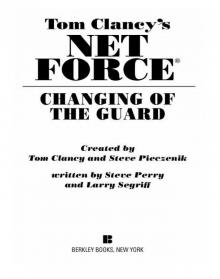 Changing of the Guard
Changing of the Guard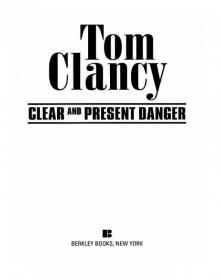 Clear and Present Danger
Clear and Present Danger Hounds of Rome
Hounds of Rome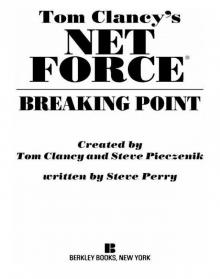 Breaking Point
Breaking Point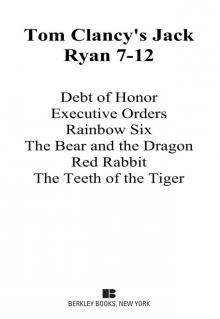 Tom Clancy's Jack Ryan Books 7-12
Tom Clancy's Jack Ryan Books 7-12 Full Force and Effect
Full Force and Effect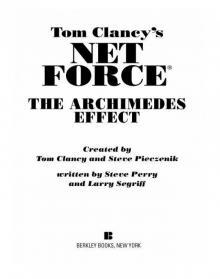 The Archimedes Effect
The Archimedes Effect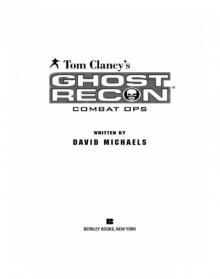 Combat Ops
Combat Ops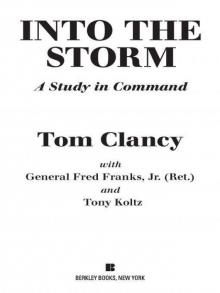 Into the Storm: On the Ground in Iraq
Into the Storm: On the Ground in Iraq Under Fire
Under Fire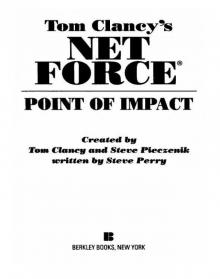 Point of Impact
Point of Impact Red Rabbit
Red Rabbit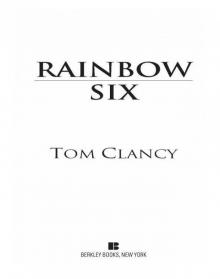 Rainbow Six
Rainbow Six The Hunt for Red October
The Hunt for Red October The Teeth of the Tiger
The Teeth of the Tiger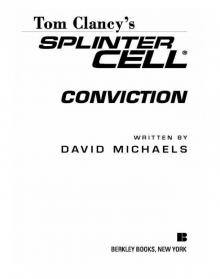 Conviction (2009)
Conviction (2009)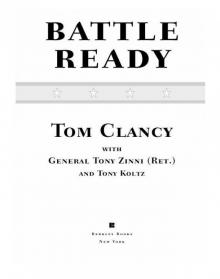 Battle Ready
Battle Ready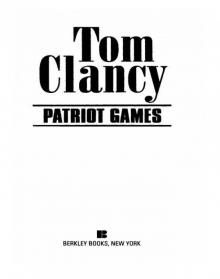 Patriot Games
Patriot Games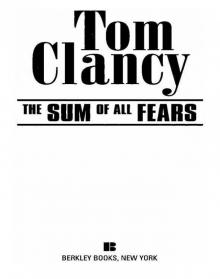 The Sum of All Fears
The Sum of All Fears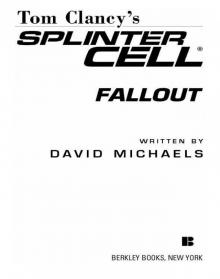 Fallout (2007)
Fallout (2007) Red Storm Rising
Red Storm Rising The Cardinal of the Kremlin
The Cardinal of the Kremlin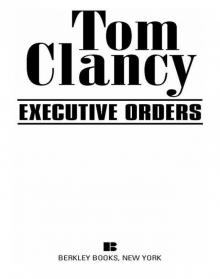 Executive Orders
Executive Orders Lincoln, the unknown
Lincoln, the unknown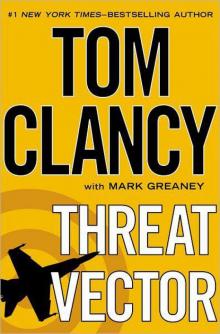 Threat Vector
Threat Vector The Hunted
The Hunted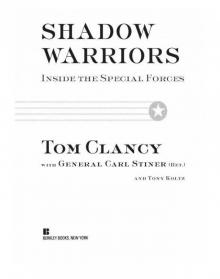 Shadow Warriors: Inside the Special Forces
Shadow Warriors: Inside the Special Forces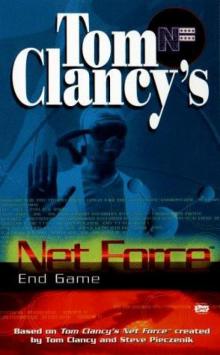 End Game
End Game Special Forces: A Guided Tour of U.S. Army Special Forces
Special Forces: A Guided Tour of U.S. Army Special Forces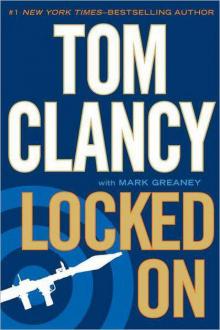 Locked On
Locked On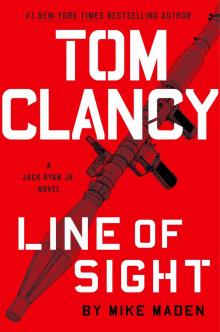 Line of Sight
Line of Sight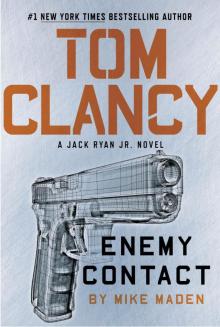 Tom Clancy Enemy Contact - Mike Maden
Tom Clancy Enemy Contact - Mike Maden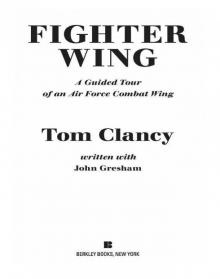 Fighter Wing: A Guided Tour of an Air Force Combat Wing
Fighter Wing: A Guided Tour of an Air Force Combat Wing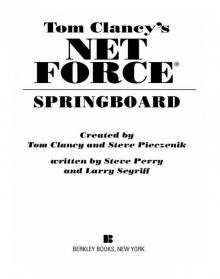 Springboard
Springboard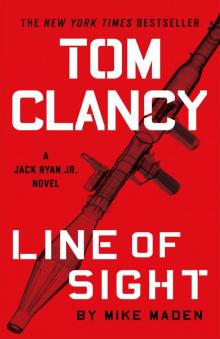 Line of Sight - Mike Maden
Line of Sight - Mike Maden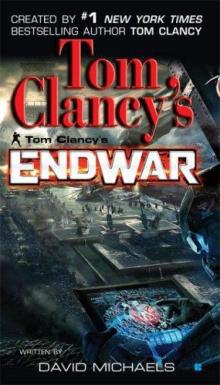 EndWar
EndWar Dead or Alive
Dead or Alive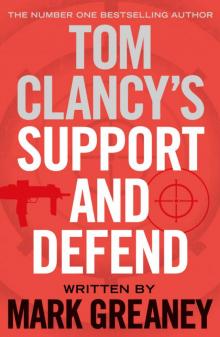 Tom Clancy Support and Defend
Tom Clancy Support and Defend Checkmate
Checkmate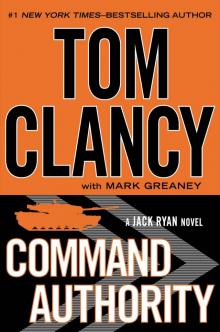 Command Authority
Command Authority Carrier: A Guided Tour of an Aircraft Carrier
Carrier: A Guided Tour of an Aircraft Carrier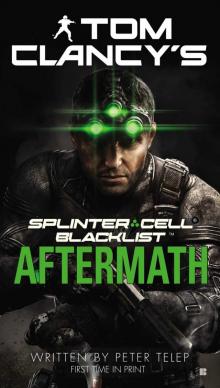 Blacklist Aftermath
Blacklist Aftermath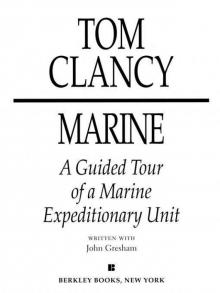 Marine: A Guided Tour of a Marine Expeditionary Unit
Marine: A Guided Tour of a Marine Expeditionary Unit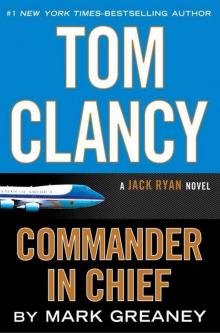 Commander-In-Chief
Commander-In-Chief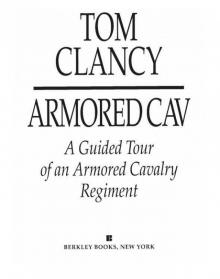 Armored Cav: A Guided Tour of an Armored Cavalry Regiment
Armored Cav: A Guided Tour of an Armored Cavalry Regiment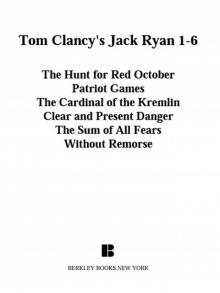 Tom Clancy's Jack Ryan Books 1-6
Tom Clancy's Jack Ryan Books 1-6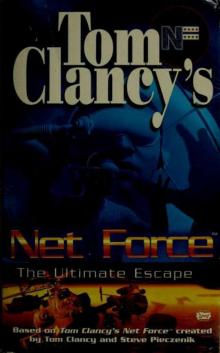 The Ultimate Escape
The Ultimate Escape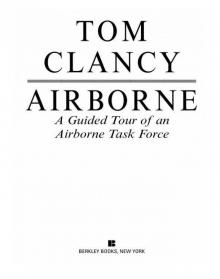 Airborne: A Guided Tour of an Airborne Task Force
Airborne: A Guided Tour of an Airborne Task Force Debt of Honor
Debt of Honor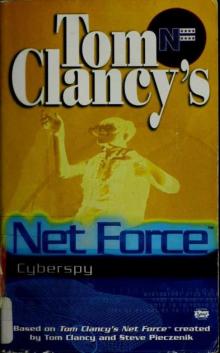 Cyberspy
Cyberspy Point of Contact
Point of Contact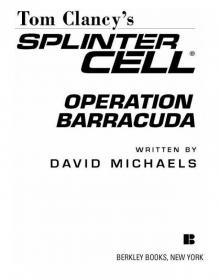 Operation Barracuda (2005)
Operation Barracuda (2005)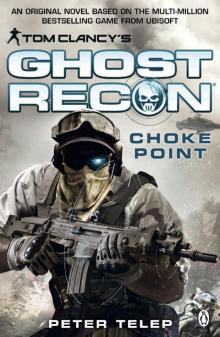 Choke Point
Choke Point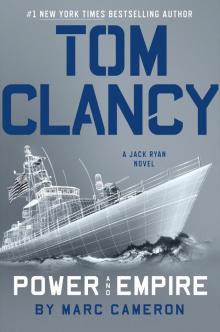 Power and Empire
Power and Empire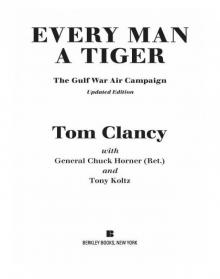 Every Man a Tiger: The Gulf War Air Campaign
Every Man a Tiger: The Gulf War Air Campaign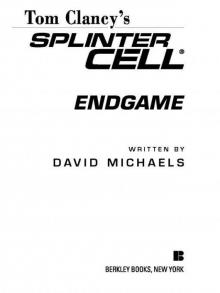 Endgame (1998)
Endgame (1998)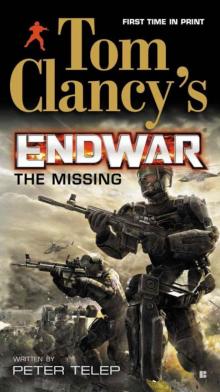 EndWar: The Missing
EndWar: The Missing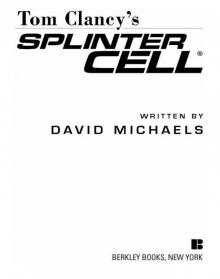 Splinter Cell (2004)
Splinter Cell (2004) The Great Race
The Great Race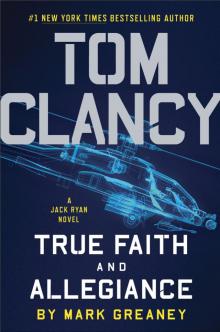 True Faith and Allegiance
True Faith and Allegiance Deathworld
Deathworld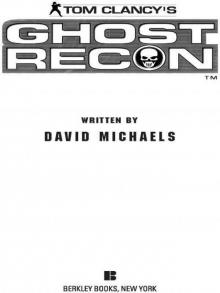 Ghost Recon (2008)
Ghost Recon (2008) Duel Identity
Duel Identity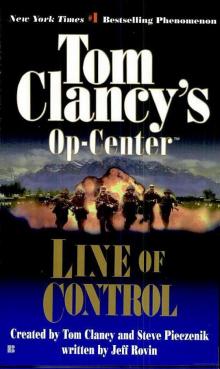 Line of Control o-8
Line of Control o-8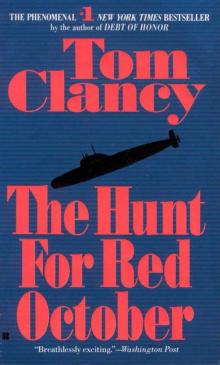 The Hunt for Red October jr-3
The Hunt for Red October jr-3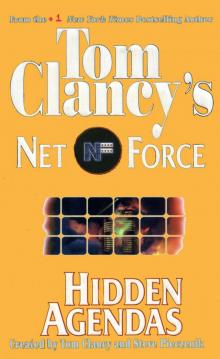 Hidden Agendas nf-2
Hidden Agendas nf-2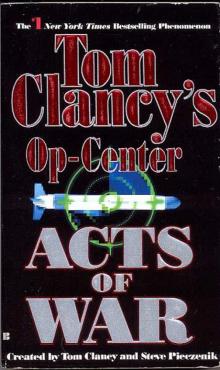 Acts of War oc-4
Acts of War oc-4 Ruthless.Com pp-2
Ruthless.Com pp-2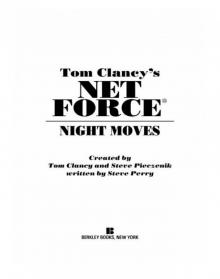 Night Moves
Night Moves The Hounds of Rome - Mystery of a Fugitive Priest
The Hounds of Rome - Mystery of a Fugitive Priest Into the Storm: On the Ground in Iraq sic-1
Into the Storm: On the Ground in Iraq sic-1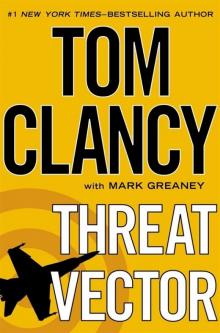 Threat Vector jrj-4
Threat Vector jrj-4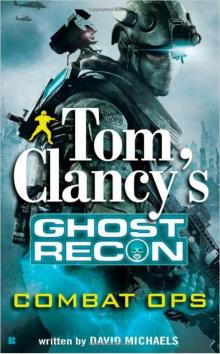 Combat Ops gr-2
Combat Ops gr-2 Virtual Vandals nfe-1
Virtual Vandals nfe-1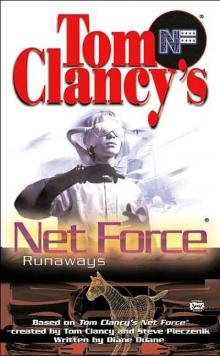 Runaways nfe-16
Runaways nfe-16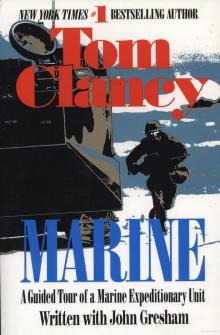 Marine: A Guided Tour of a Marine Expeditionary Unit tcml-4
Marine: A Guided Tour of a Marine Expeditionary Unit tcml-4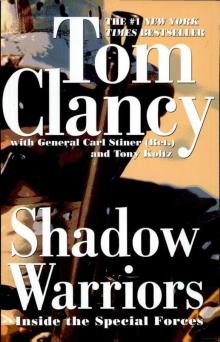 Shadow Warriors: Inside the Special Forces sic-3
Shadow Warriors: Inside the Special Forces sic-3 Jack Ryan Books 1-6
Jack Ryan Books 1-6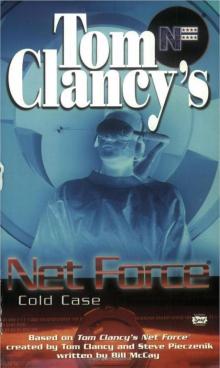 Cold Case nfe-15
Cold Case nfe-15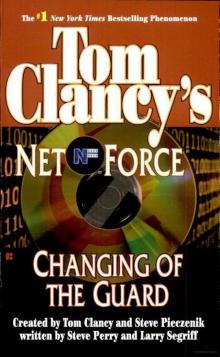 Changing of the Guard nf-8
Changing of the Guard nf-8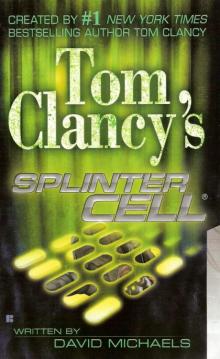 Splinter Cell sc-1
Splinter Cell sc-1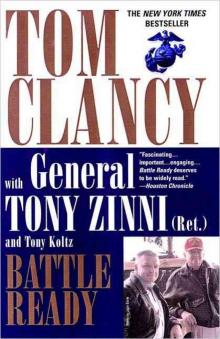 Battle Ready sic-4
Battle Ready sic-4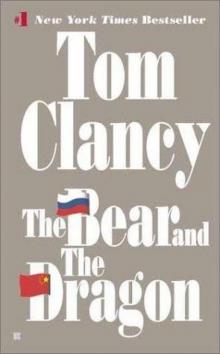 The Bear and the Dragon jrao-11
The Bear and the Dragon jrao-11 Fighter Wing: A Guided Tour of an Air Force Combat Wing tcml-3
Fighter Wing: A Guided Tour of an Air Force Combat Wing tcml-3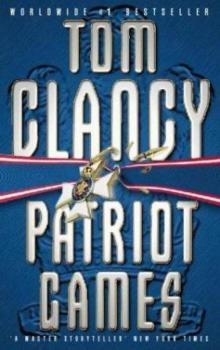 Patriot Games jr-1
Patriot Games jr-1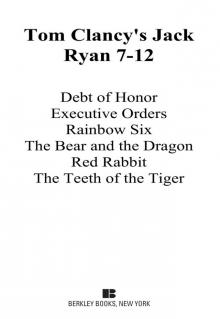 Jack Ryan Books 7-12
Jack Ryan Books 7-12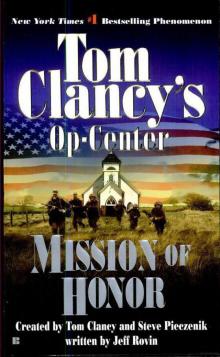 Mission of Honor o-9
Mission of Honor o-9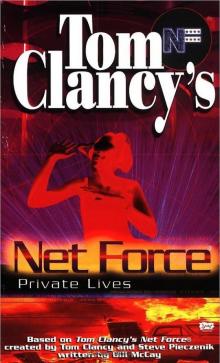 Private Lives nfe-9
Private Lives nfe-9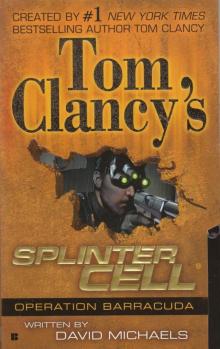 Operation Barracuda sc-2
Operation Barracuda sc-2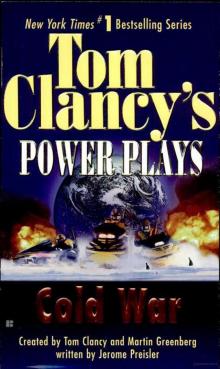 Cold War pp-5
Cold War pp-5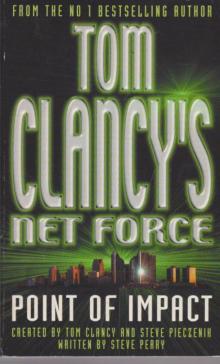 Point of Impact nf-5
Point of Impact nf-5 Red Rabbit jr-9
Red Rabbit jr-9 The Deadliest Game nfe-2
The Deadliest Game nfe-2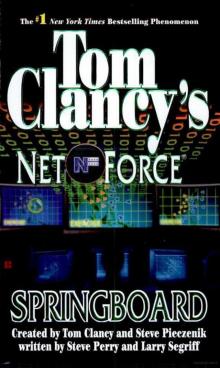 Springboard nf-9
Springboard nf-9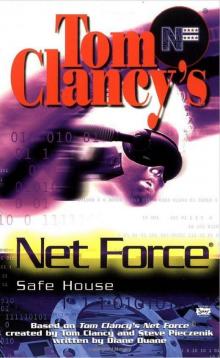 Safe House nfe-10
Safe House nfe-10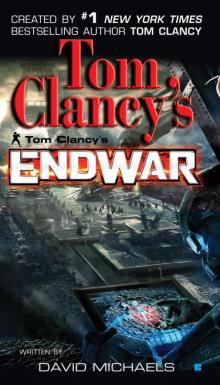 EndWar e-1
EndWar e-1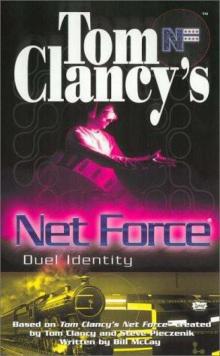 Duel Identity nfe-12
Duel Identity nfe-12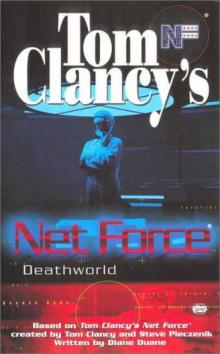 Deathworld nfe-13
Deathworld nfe-13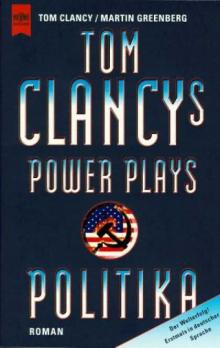 Politika pp-1
Politika pp-1 Rainbow Six jr-9
Rainbow Six jr-9 Tom Clancy's Power Plays 1 - 4
Tom Clancy's Power Plays 1 - 4 Endgame sc-6
Endgame sc-6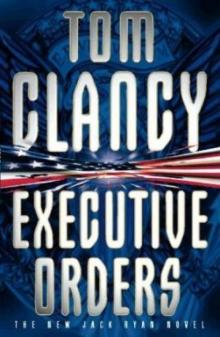 Executive Orders jr-7
Executive Orders jr-7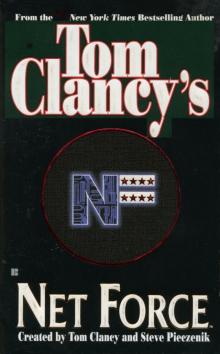 Net Force nf-1
Net Force nf-1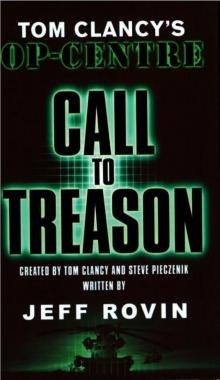 Call to Treason o-11
Call to Treason o-11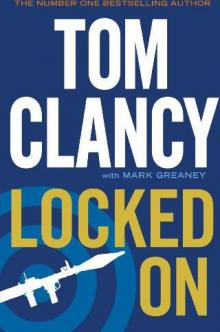 Locked On jrj-3
Locked On jrj-3 Against All Enemies
Against All Enemies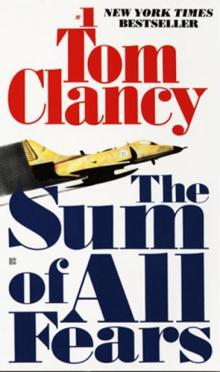 The Sum of All Fears jr-7
The Sum of All Fears jr-7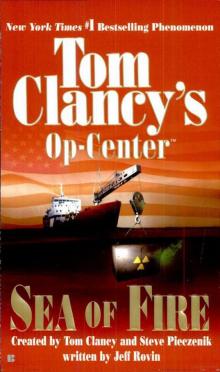 Sea of Fire o-10
Sea of Fire o-10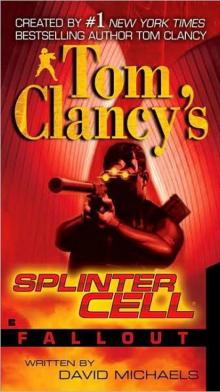 Fallout sc-4
Fallout sc-4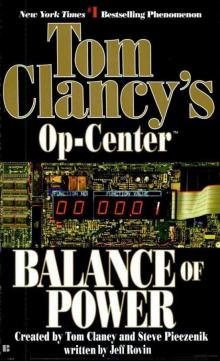 Balance of Power o-5
Balance of Power o-5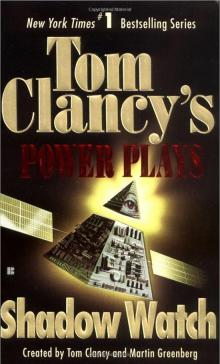 Shadow Watch pp-3
Shadow Watch pp-3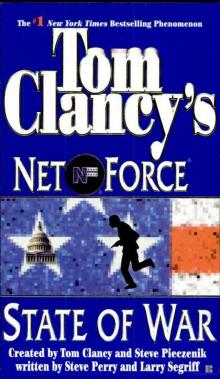 State of War nf-7
State of War nf-7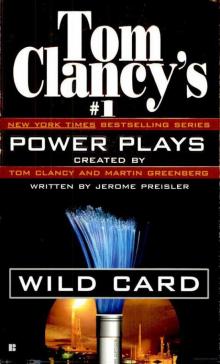 Wild Card pp-8
Wild Card pp-8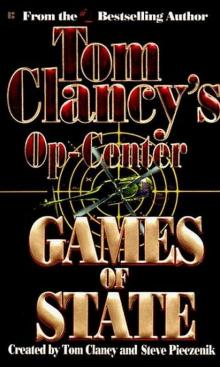 Games of State o-3
Games of State o-3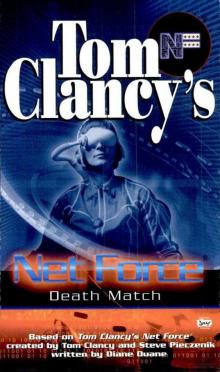 Death Match nfe-18
Death Match nfe-18 Against All Enemies mm-1
Against All Enemies mm-1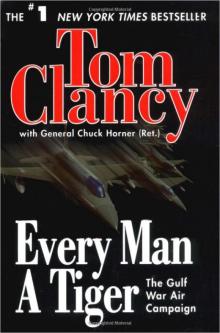 Every Man a Tiger: The Gulf War Air Campaign sic-2
Every Man a Tiger: The Gulf War Air Campaign sic-2 Cybernation nf-6
Cybernation nf-6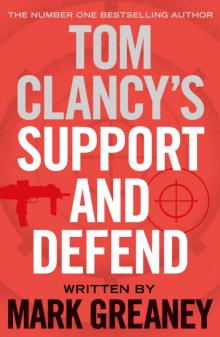 Support and Defend
Support and Defend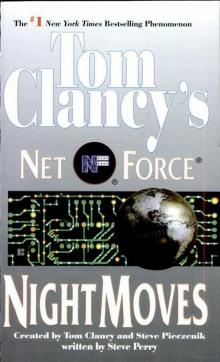 Night Moves nf-3
Night Moves nf-3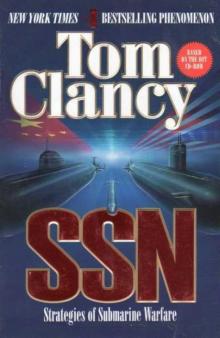 SSN
SSN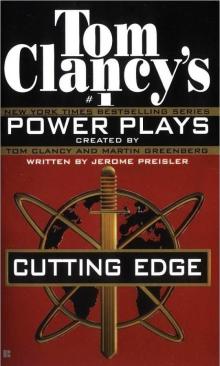 Cutting Edge pp-6
Cutting Edge pp-6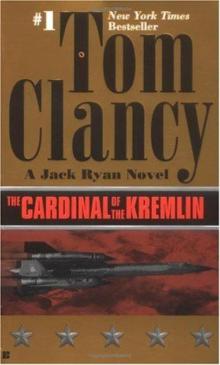 The Cardinal of the Kremlin jrao-5
The Cardinal of the Kremlin jrao-5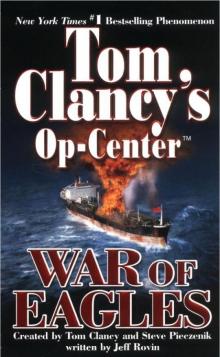 War of Eagles o-12
War of Eagles o-12 Op-Center o-1
Op-Center o-1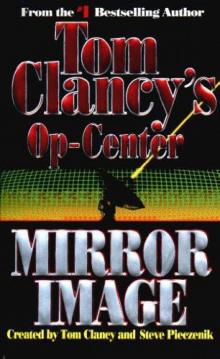 Mirror Image o-2
Mirror Image o-2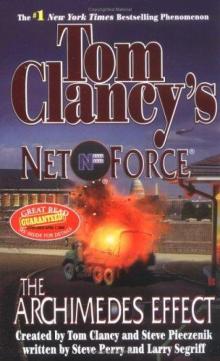 The Archimedes Effect nf-10
The Archimedes Effect nf-10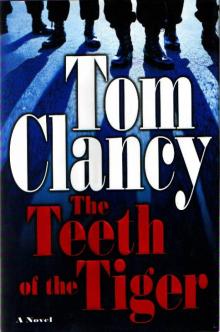 Teeth of the Tiger jrj-1
Teeth of the Tiger jrj-1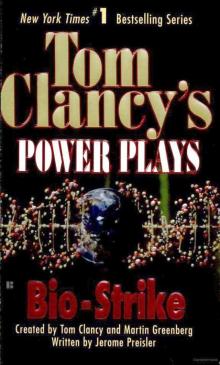 Bio-Strike pp-4
Bio-Strike pp-4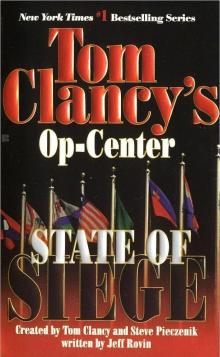 State of Siege o-6
State of Siege o-6 Debt of Honor jr-6
Debt of Honor jr-6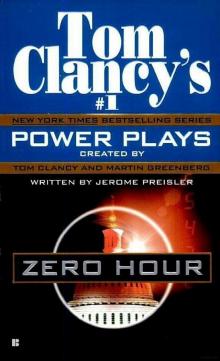 Zero Hour pp-7
Zero Hour pp-7 Ghost Recon gr-1
Ghost Recon gr-1 Command Authority jr-10
Command Authority jr-10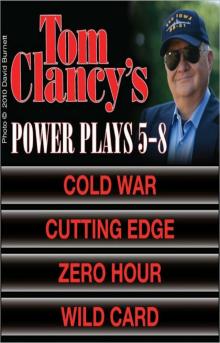 Tom Clancy's Power Plays 5 - 8
Tom Clancy's Power Plays 5 - 8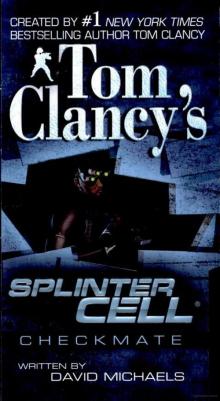 Checkmate sc-3
Checkmate sc-3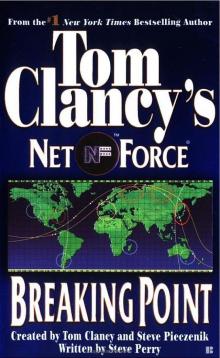 Breaking Point nf-4
Breaking Point nf-4 Gameprey nfe-11
Gameprey nfe-11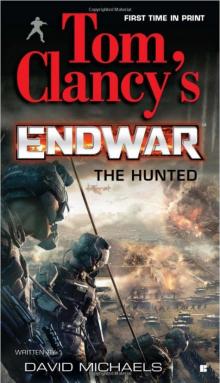 The Hunted e-2
The Hunted e-2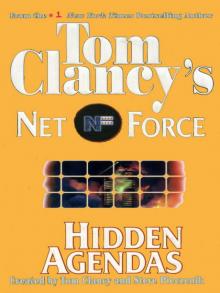 Hidden Agendas
Hidden Agendas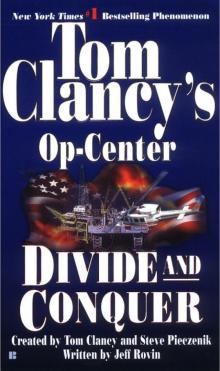 Divide and Conquer o-7
Divide and Conquer o-7